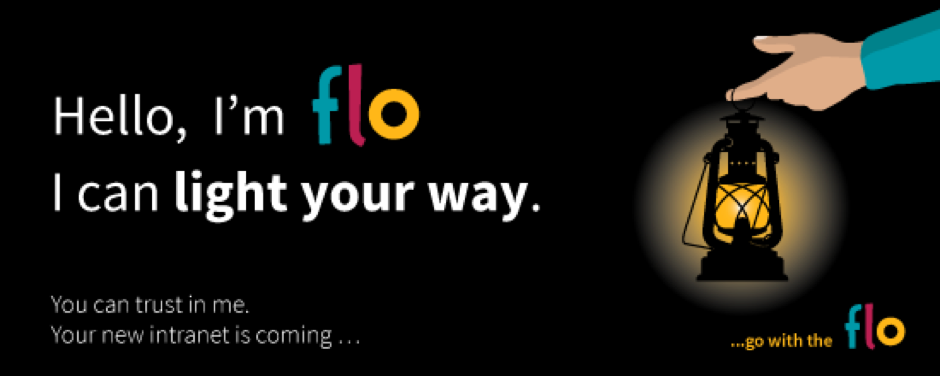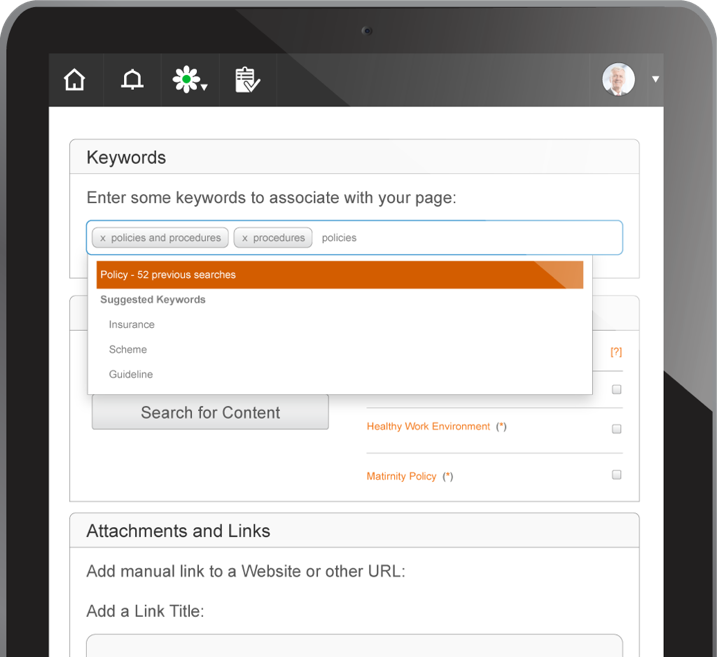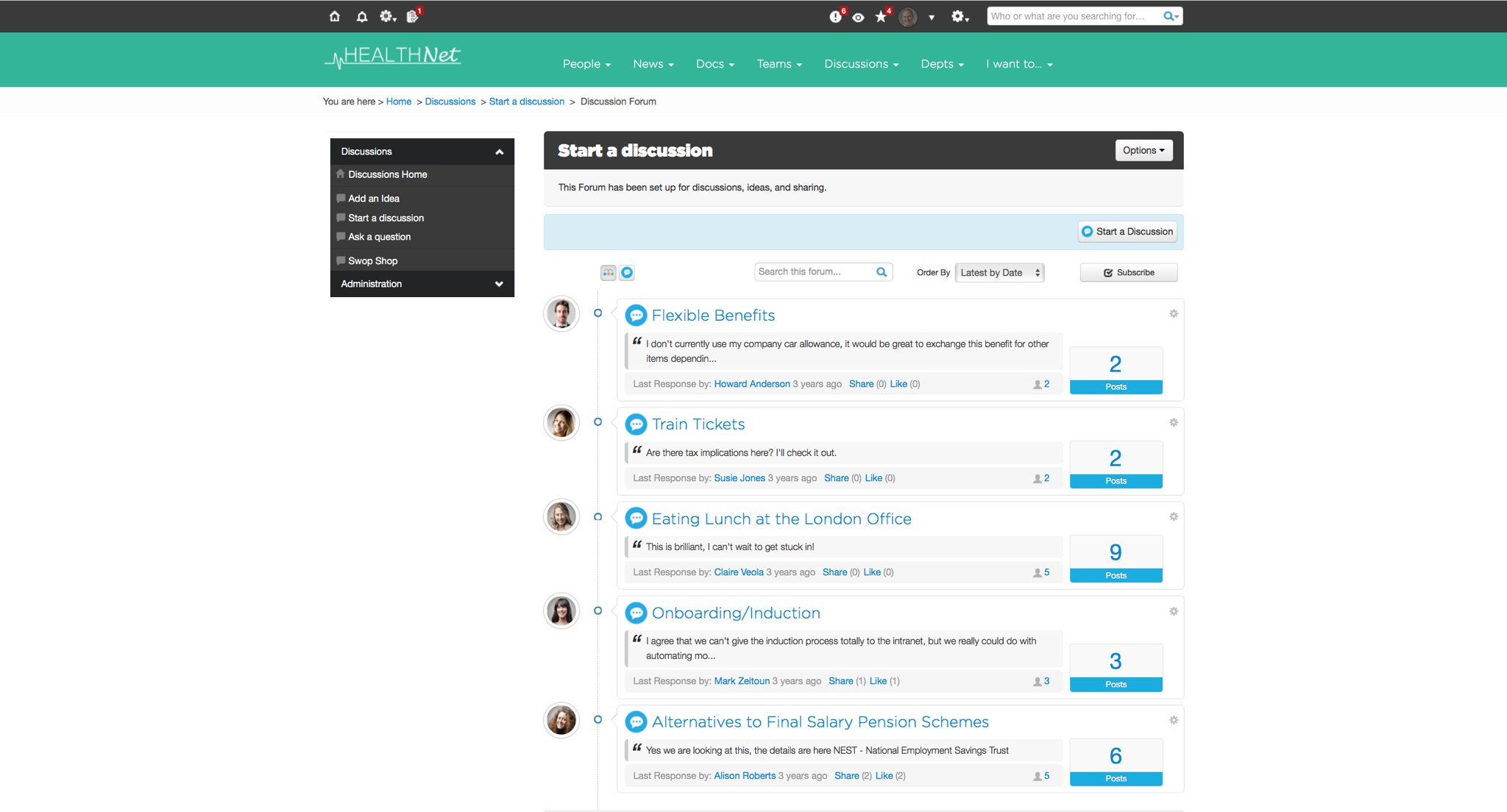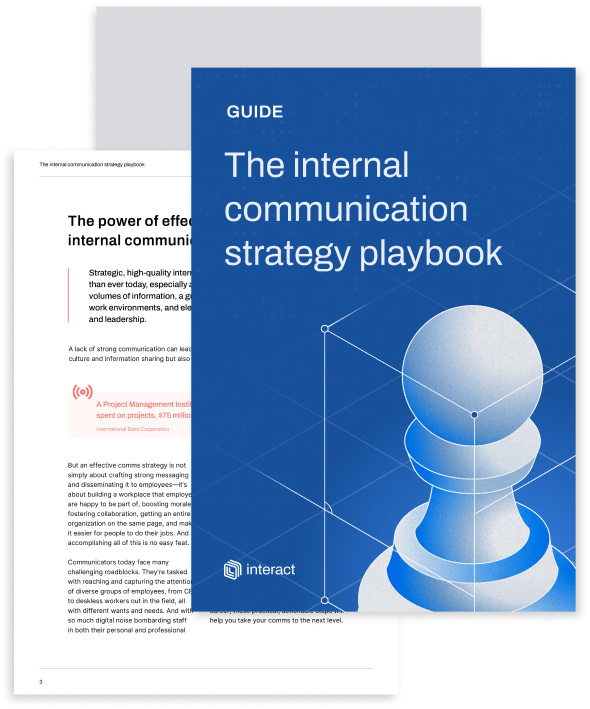Every day of our lives, we battle digital noise. We face pop-ups on our favorite websites and sponsored posts on social media. Our email inboxes require regular cleansing. So, if you’re the person in charge of connecting a workplace and its employees, you need some internal comms hacks to cut through the noise.
The cost of not communicating
$26,041 per employee per year in lost efficiency.
Poor internal communication is linked to higher staff turnover, a rise in misconduct and errors, lower levels of staff engagement and customer service, reduced innovation and productivity and much, much more. For internal comms specialists, the pressure is on to deliver results.
Free ebook – 14 steps to great internal communication
The good news is, we now have more options and tools available than ever before. Maximizing engagement with your internal communications campaigns requires innovation and outside-the-box thinking; to help you get started, we’ve compiled a list of quick-win internal comms hacks to get your business communicating effectively.
1. Make use of automation tools
Marketing automation isn’t just for your customers and prospects. Try using commercial software for internal comms purposes – for example, setting up your new starters with an automated email campaign to push out key information before their start date. It removes unnecessary workload and frees you up to focus on new campaigns.
2. Use personas
Can’t find the right voice? Personas are stand-ins for real users on your company intranet or communications platform.
These personas are constructed using the concerns and interests of workers from various departments and then used to post content. They bridge the gap between management and employees, which starts conversations and allows managers and executives to get in the shoes of workers and better listen to them.
Personas in action: Kent Community Health NHS Foundation Trust developed a persona around its new intranet, Flo – named after the iconic nursing figure Florence Nightingale.

Designed to be a personable and approachable character with whom users could identify, Flo was used as the author for most core content and as a figurehead to answer queries and respond to ideas submitted by staff. A brand, tone and voice were carefully constructed around the persona to maximise engagement.
3. Use tagging and keywords
We all think differently. The words and phrases we use differ; so, when it comes to finding information or content internally, it pays to cover all our bases.
For example, employees looking to book time off may search for several terms including annual leave, holiday, absence, time off, vacation – if you have employees from around the globe, the challenge is bigger still. If you have an intelligent CMS or intranet with tagging or keyword functionality, use it. Crowdsource ideas for popular terms or identify ‘failure to find’ searches to see what your staff are looking for.

4. Be clear with your titles
It sounds simple, and it is. But how many times have you searched for a vital document and failed to find what you’re looking for, thanks to complex acronyms, paraphrasing, or an individual’s personal filing system that no-one else understands?
Save your internal communications collateral using simple, clear titles that explain what the document is. Adopt a standard format and roll it out business-wide. No-one needs ‘Human_Resourcespolicyv5/2014internalHRPF1’. ‘HR Policy’ will do.
5. Centralize hosting
Are you battling the storage maze? If your business knowledge is housed across multiple drives, servers, platforms or even simply retained by individuals, enabling effective communication or finding what you need can be a nightmare.
Now, with the big data capacity all organizations have, that can all change. Make knowledge preservation and management a key focus of any internal communications strategy. Name a centralized storage space, whether your DMS or intranet, and use it.
Free ebook – 14 steps to great internal communication
6. Create a comms calendar – and centralize it
Information overload is real. Avoid spamming your users and ensure your communication campaigns are effective by planning your efforts in advance on a calendar. There will always be ad hoc, spur of the moment communications that need pushing out – but this helps you manage the process.
Consider external events that may have impact – for example, bank holidays, significant business events. Then, post the calendar somewhere central and promote it across departments. When they have an event, launch or topic that needs promoting internally, they can add it to the calendar – and this also helps them understand your workload and capacity.
7. Piggyback on other events or projects
If there’s something big happening, whether internal or external to your business, why not capitalize on the opportunity?
Your employees are likely already talking; this provides a valuable opportunity to ride that wave and get your message across. Many of us already capitalize on holidays, pushing out our Halloween-themed employee email newsletter or using New Year to flag wellbeing initiatives.
Consider piggybacking other major events: whether that be the Super Bowl or the Olympics, the big fight on Saturday or your newest product launch next month. Use the excitement and conversation to your advantage.
8. Tap into employee ideas
Keeping your comms creative can become exhausting. So why not tap into one of the best sources of inspiration at your disposal: your employees?
If you have a major campaign on the horizon that you really want to hit home, ask for employee ideas and input. Give your staff the tools they need to put their ideas forward: forums, discussion boards, an ideas box. Not only do you get others doing the dog work for you, but the ideas are more likely to be ones they’ll respond to.

9. Copycat comms
Seen a commercial comms campaign you loved? One that inspired you? A viral post that took off and got everyone talking?
Don’t be afraid to copycat external campaigns for internal purposes. While I’m not one to champion plagiarism, adapting commercial campaigns for internal use can prove highly effective. Users recognize the concept, identify with it, and are more likely to engage with it as a result.
10. Create templates for common comms
There are some internal communications or announcements that we make time and again. Speed up the process and alert your users to what’s coming by creating standard templates for frequent comms.
For example, create a ‘welcome’ template to introduce a new starter; a ‘new product!’ announcement template, or one reserved for security announcements and new policies.
Free ebook – 14 steps to great internal communication
11. Use video
OK, so it’s not exactly a secret as far as internal comms hacks go, but video is definitely worth utilizing. Already, 69% of all consumer traffic is video; by 2020, it’s estimated that will reach 82%. The workplace is set to follow.
If it’s internal, don’t worry about polishing off every video with editing and HD presentation. Think outside the box for use cases: training and how to videos, a weekly newsletter perhaps, ‘ask the staff’ contributions or interviews on particular topics. Be creative – your staff will engage accordingly.
12. Keep it visual
Instagram, Snapchat, and Pinterest are popular for a reason. Audiences respond to the visual. In fact, studies show that while only 10% of people remember what they hear – and 20% what they read – 80% of people remember what they see and do. A picture really can be worth 1,000 words.
Break up your comms with visual aids: photos, pictures, maps, graphs, drawings, diagrams. Inject color. The golden ratio of image to text is 1 image for every 100 words for standard content: try using it internally and reap the rewards.
13. Infographics
Take the visual one step further with your very own internal infographic. If you have access to stats, data, analytics or even just have a rather ‘dry’ topic that you want to bring to life, an infographic can transform information into digestible ‘chunks’ that are more likely to have an impact.
14. Gamification
There’s no denying the fact: sometimes, internal announcements and communications can be dry. So why not introduce an element of fun into your internal comms process?
Gamification is a hot topic in marketing terms and has been shown to reap rewards internally as well as externally. It could be a leaderboard, a competition or a poll. Why not put it to your employees to create content and compete for likes or shares? Or introduce a game element to your training and onboarding process, testing your employees on their newfound knowledge?

15. Push, not pull
Stop waiting for your users to come to you. If you have an urgent or key piece of information that you need users to acknowledge or engage with, consider how to push it out so it will be noticed.
If you have a mobile intranet app, push notifications are a powerful tool and can help your internal comms hacks. You may want to consider featured banners or posts on your intranet homepage, text messaging, or a manager cascade for key comms.
Loving what you’ve read so far? Find part 2 of our essential internal comms hacks here!






